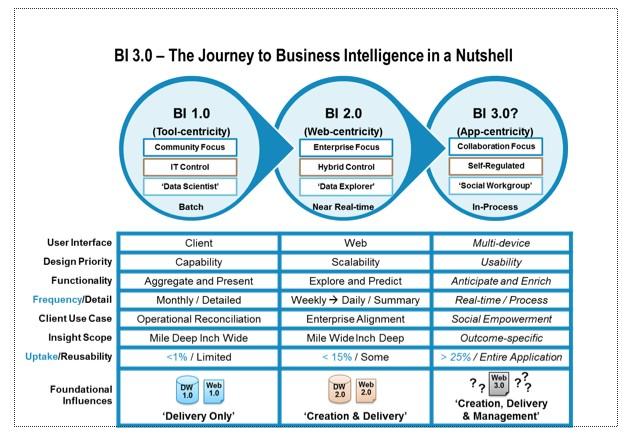What to Do If You Have a Car Accident and It’s Your Fault
Oh no! You’re driving along, minding your own business, when suddenly—bam! You’re in a car accident. Your heart is pounding, your head is spinning, and you’re not sure what to do. Take a deep breath and try to stay calm. Here’s what you need to do if you have a car accident and it’s your fault:
Stay Calm and Assess the Situation
The first thing you need to do is stay calm and assess the situation. This can be difficult to do when you’re feeling shaken up, but it’s important to try to remain calm. Once you’ve calmed down, take a moment to look around and see if anyone is injured. If you or anyone else is injured, call 911 immediately. If there are no injuries, you can start to gather information about the accident.
Exchange Information
Once you’ve made sure that everyone is safe, you need to exchange information with the other driver(s) involved in the accident. This includes your name, address, phone number, insurance information, and license plate number. You should also take photos of the damage to both vehicles. If there were any witnesses to the accident, you should get their contact information as well.
Report the Accident to Your Insurance Company
As soon as possible after the accident, you need to report it to your insurance company. They will need to know the details of the accident, including the date, time, location, and the names of the other drivers involved. Your insurance company will also need to see photos of the damage to your vehicle.
Get a Police Report
In some cases, you may need to get a police report. This is especially true if there are injuries, if there is significant damage to the vehicles, or if there is a dispute about who was at fault. The police report will provide an official record of the accident, which can be helpful when filing an insurance claim or taking legal action.
Hire an Attorney
If you have been seriously injured in the accident or if there is a dispute about who was at fault, you may want to consider hiring an attorney. An attorney can help you protect your rights and get you the compensation you deserve.
If You Have a Car Accident and It’s Your Fault
Car accidents are never fun, and they can be even worse if you’re the one at fault. But don’t panic! Here are a few things you can do to make the situation a little bit easier.
First, take a deep breath and assess the situation. Check for injuries, and if you’re able to, move your car to a safe location. Once you’ve done that, you can start to figure out what happened and what you need to do next.
Exchange Information
Once you’ve checked for injuries and moved your car to a safe location, the next step is to exchange information with the other driver(s) involved in the accident. This includes your name, address, phone number, and insurance information. You should also get the make, model, and license plate number of the other vehicle(s) involved.
If there are any witnesses to the accident, be sure to get their names and contact information as well. Their testimony could be helpful if you need to file an insurance claim or go to court.
Don’t Admit Fault
It’s important to remember that you should never admit fault to the other driver(s) involved in the accident. Even if you believe you’re at fault, it’s best to wait until you’ve had a chance to talk to your insurance company.
Admitting fault could make it more difficult to get your insurance claim approved, or it could even lead to you being sued by the other driver(s). So, be careful what you say, and don’t sign anything until you’ve had a chance to talk to your lawyer.
File a Police Report
In most cases, you should file a police report after a car accident. This will help to document the accident and provide you with a record of what happened. The police report can also be helpful if you need to file an insurance claim or go to court.
To file a police report, you can call the police department’s non-emergency number. The police will then send an officer to the scene of the accident to investigate.
Call Your Insurance Company
Once you’ve filed a police report, you should call your insurance company to report the accident. Your insurance company will be able to help you file a claim and get your car repaired or replaced.
When you call your insurance company, be sure to have the following information ready:
- The date, time, and location of the accident
- The make, model, and license plate number of your car
- The make, model, and license plate number of the other vehicle(s) involved in the accident
- The names and contact information of the other driver(s) involved in the accident
- The names and contact information of any witnesses to the accident
Get a Copy of the Police Report
Once the police have finished their investigation, you can request a copy of the police report. The police report will contain important information about the accident, such as the officer’s findings and the names and contact information of the other driver(s) involved.
You can request a copy of the police report by calling the police department’s non-emergency number.
If You Have a Car Accident and It’s Your Fault
Getting into a car accident is never a fun experience, but it’s especially stressful when you’re the one who caused it. In the aftermath of an accident, it’s easy to feel overwhelmed and unsure of what to do. That’s why we’ve put together this guide to help you navigate the process of dealing with a car accident that’s your fault.
Call the Police and Insurance Company
The first thing you should do after a car accident is to call the police. This is especially important if there are any injuries or significant damage to the vehicles involved. The police will create a report that will help to document the accident and provide evidence for your insurance company.
Once you’ve called the police, you should also call your insurance company. They will be able to start the process of filing a claim and getting your car repaired or replaced. Be sure to provide your insurance company with all of the details of the accident, including the police report number.
Exchange Information
After you’ve called the police and your insurance company, you should exchange information with the other drivers involved in the accident. This includes your name, address, phone number, insurance information, and license numbers. It’s also a good idea to take pictures of the damage to all of the vehicles involved.
Once you’ve exchanged information, you can leave the scene of the accident. However, be sure to get a copy of the police report before you go.
Cooperate with the Insurance Company
After you’ve filed a claim with your insurance company, they will likely send you an adjuster to assess the damage to your car. The adjuster will also take a statement from you about the accident. It’s important to be honest and cooperative with the insurance adjuster, as this will help to ensure that your claim is processed quickly and fairly.
Your insurance company may also require you to participate in a recorded statement. This is a formal interview in which you will be asked questions about the accident. It’s important to prepare for your recorded statement by gathering all of the relevant documents and information. You should also be aware that anything you say in your recorded statement can be used against you in court.
Get Legal Advice
If you’re worried about the legal implications of the accident, you may want to consider getting legal advice. An attorney can help you to understand your rights and options, and can represent you in court if necessary.
Getting into an accident is frustrating, but it doesn’t have to be as stressful as it seems. By following these tips, you can help to make the process as smooth and painless as possible.
If you have a car accident and it’s your fault…
It’s a terrible feeling, isn’t it? You’re shaken up, your car is damaged, and you’re not sure what to do. Accidents can be scary, but it’s important to stay calm and follow the steps below. After all, you’ve already had a bad day, no need to make it worse. Take a deep breath and let’s get started.
Exchange Information
First, you need to exchange information with the other driver(s) involved. This includes contact information, such as name, address, phone number, and email address. You should also exchange insurance information, such as the name of the insurance company and the policy number. Finally, you should exchange license numbers. It’s also a good idea to take photos of the damage and the scene of the accident. This will help you document what happened and will be helpful if you need to file a claim with your insurance company.
Call the Police
If there are any injuries, you should call the police. The police will create an accident report that can be helpful if you need to file a claim with your insurance company or if you decide to take legal action. Unfortunately, there are some people out there that will try and take advantage of you, especially after a car accident. The police report will act as an unbiased third party statement.
Report the Accident to Your Insurance Company
You should report the accident to your insurance company as soon as possible. Your insurance company will be able to help you file a claim and will also be able to provide you with guidance on what to do next. Make sure that you provide your insurance company with all of the information that you have, including the other driver’s information, the police report, and any photos that you have taken. The sooner you report the accident, the sooner your insurance company can start processing your claim.
Get a Copy of the Police Report
Once the police have created an accident report, you should get a copy of the report. You can usually get a copy of the report from the police station or from the website of the city or county where the accident occurred. The police report will contain important information about the accident, such as the date, time, and location of the accident, the names of the drivers involved, and the damage to the vehicles. It’s important to keep a copy of the police report for your records and to avoid any disputes with the other driver or their insurance company. This document can come in handy, especially if it needs to go to court.
If You Have a Car Accident and It’s Your Fault
If you’re unlucky enough to get involved in a car accident, nothing makes the matter worse than knowing that you’re the one to blame. What’s more, proving it can be a huge hassle. The first step is to collect as much evidence as you can. This may require reaching out to bystanders and witnesses to give their testimonies. Even if the damage is minimal, taking pictures of the scene and any injuries that may have occurred is a must. The more documentation you have, the better your chances are of resolving the matter quickly and fairly.
Contacting your insurance company as soon as possible is important. They’ll want to know the details of the accident, so be prepared to provide them with information such as the date and time of the accident, the names of the people involved, and their insurance information. The insurance company will then send out an adjuster to assess the damage and determine who’s at fault. In many cases, they’ll also handle the communication with the other driver’s insurance company. Filing a police report is also a good idea, as it can provide an official record of what happened at the time of the accident.
Of course, the best way to avoid the hassle of dealing with a car accident is to drive safely in the first place. But we all make mistakes, so don’t panic if you ever happen to find yourself in this situation. By following these tips, you can increase your chances of a smooth and fair resolution.
Gather Evidence
Gathering evidence is one of the most important things you can do after a car accident. This will help you support your claim with the insurance company and prove that you were not at fault. Here are some tips for gathering evidence:
Get the Other Driver’s Information
The first thing you should do after a car accident is to get the other driver’s information. This includes their name, address, phone number, and insurance information. If possible, take a picture of their driver’s license and insurance card.
Take Photos
Take photos of the accident scene, including the damage to both vehicles, the surrounding area, and any injuries that you or the other driver may have sustained. If possible, take photos from multiple angles.
Witness Statements
If there were any witnesses to the accident, get their contact information and take down their statements. Their testimony can be helpful in support of your claim.
Police Report
If possible, file a police report. The police report will provide an official record of the accident and can be helpful in support of your claim.
Medical Records
If you or the other driver were injured in the accident, get copies of your medical records. These records can help to document the extent of your injuries and the treatment you received.
Don’t Admit Fault
It’s important to never admit fault to the other driver or the police. Even if you believe you were at fault, it’s best to leave it up to the insurance companies to determine who was responsible.
By following these tips, you can help to strengthen your claim with the insurance company and increase your chances of a fair settlement.
If You Have a Car Accident and It’s Your Fault
It’s a terrifying moment when you realize you’ve been in a car accident. Your heart starts pounding, your mind races, and you may even feel like throwing up. The first thing you need to do is take a deep breath and try to stay calm. Once you’ve calmed down, you need to assess the situation and figure out what to do next.
If the accident is minor and no one is injured, you can exchange information with the other driver and go your separate ways. However, if there are any injuries, you need to call the police and get a police report. You may also need to seek medical attention for your injuries.
Contacting Your Insurance Company
Once you’ve taken care of the immediate aftermath of the accident, you need to contact your insurance company. They will need to know about the accident so they can start the claims process. Be sure to give them all the details of the accident, including the date, time, location, and the names and contact information of the other drivers involved.
Exchanging Information
If you’re able to, you should exchange information with the other driver(s) involved in the accident. This includes your name, address, phone number, insurance company, and policy number. You should also take photos of the damage to your car and the other car(s) involved.
Getting a Police Report
If there are any injuries, you need to call the police and get a police report. The police report will document the accident and provide an official record of what happened. This can be helpful if there is a dispute over fault or if you need to file a claim with your insurance company.
Seeking Medical Attention
If you’re injured in a car accident, even if you don’t think your injuries are serious, you should still see a doctor. Some injuries, such as whiplash, may not show up right away. Seeing a doctor can help you get the treatment you need and document your injuries for insurance purposes.
Contact a Lawyer (Optional)
If the accident is serious or there is a dispute over fault, consider contacting a lawyer who specializes in personal injury cases. They can help you navigate the legal process and protect your rights.
If you’re not sure who’s going to pay for your car repairs, or if you’re injured and need help getting compensation for your medical bills, a lawyer can help sort it out. They can also represent you in court if necessary.
Conclusion
Car accidents are never fun, but they’re even worse when you’re at fault. However, by following these steps, you can help minimize the damage and protect your rights. The most important thing to do is to stay calm and collected. Once you’ve done that, you can start taking the necessary steps to get your life back on track.
If you have a car accident and it’s your fault, it’s normal to feel overwhelmed, confused, and even scared. But it’s crucial to stay calm and collected in the aftermath of a collision. Remember, your safety and well-being should be your top priority.
Take Care of Yourself
After an accident, it’s important to prioritize your physical and mental well-being. Seek medical attention if needed and consider therapy or counseling to process the emotional impact. Remember, it’s not just about the physical injuries but also about the invisible scars that need healing.
Gather Information
Once you’re in a stable condition, gather as much information as possible about the accident. Exchange insurance and contact details with the other driver. Take photos of the damage to both vehicles and the surrounding area.
Document the Scene
Write down a detailed account of the accident, including the time, location, and any witnesses present. Note down the weather conditions and road conditions as well. This documentation can be invaluable for insurance claims and legal proceedings.
Contact Your Insurance
Report the accident to your insurance company as soon as possible. Provide them with all the information you’ve gathered, including the police report if one was filed.
Protect Your Rights
It’s wise to consult with an attorney if you’re seriously injured or facing significant property damage. An attorney can help you understand your rights and ensure you receive fair compensation.
Cooperate with Authorities
Stay cooperative and provide accurate information to the police and other authorities involved in the investigation. It’s important to be honest and forthcoming to avoid any misunderstandings.
Move On
Moving on after a car accident can be challenging but necessary. Remember, it’s okay to seek professional help if you’re struggling to cope with the physical or emotional toll of the accident. Time can be a great healer, and with support, you can gradually rebuild your life.




Leave a Reply